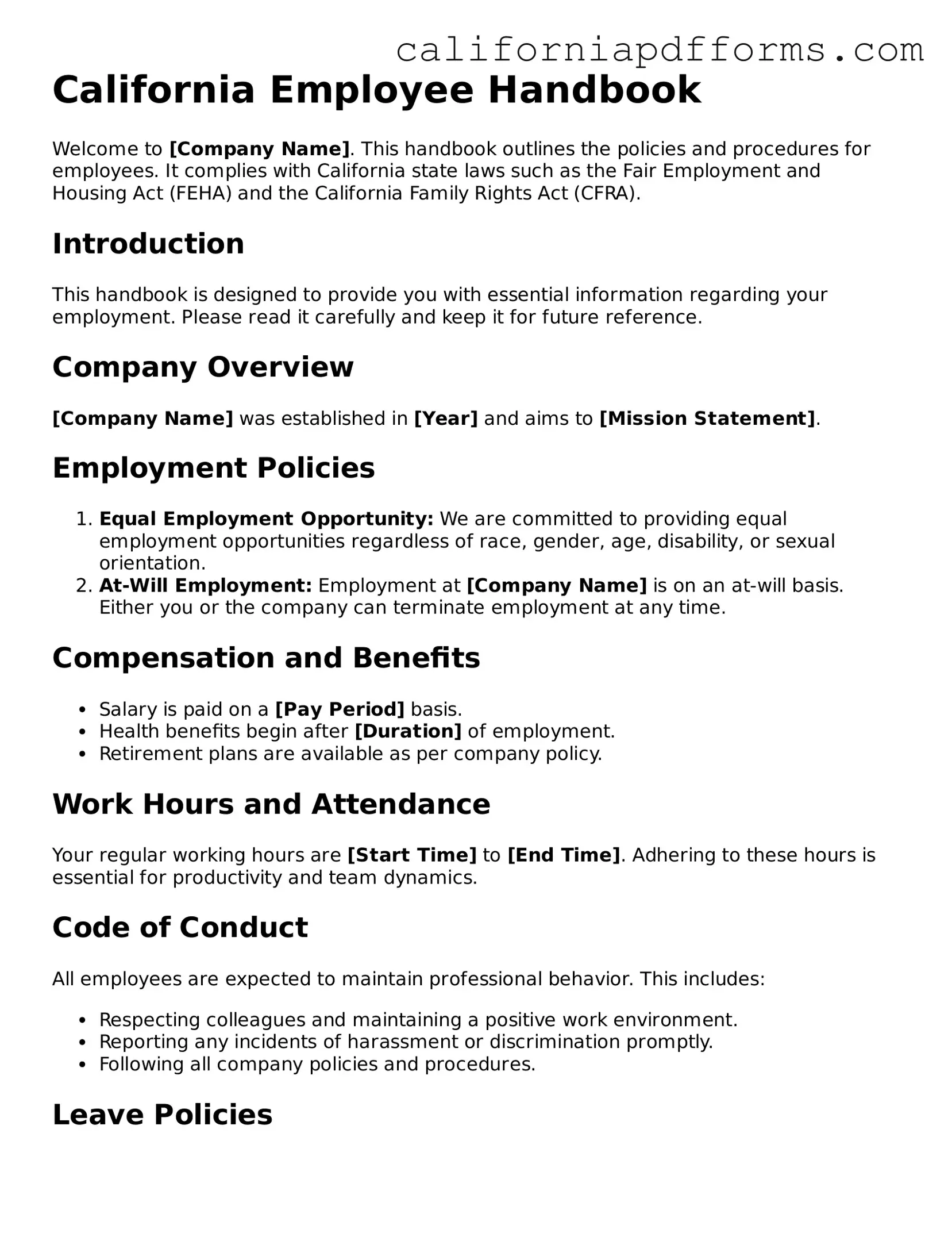The California Employee Handbook form serves as a comprehensive guide for employees regarding company policies, procedures, and expectations. It outlines the rights and responsibilities of both the employer and employees, ensuring clarity in the workplace.
All employers in California, regardless of size, should complete the Employee Handbook form. This ensures that all employees have access to important information about workplace policies and their rights under state and federal law.
What topics should be included in the Employee Handbook?
The Employee Handbook should cover a variety of topics, including:
-
Company mission and values
-
Employment policies (hiring, termination, and promotions)
-
Workplace conduct and behavior expectations
-
Compensation and benefits
-
Leave policies (sick leave, vacation, and family leave)
-
Health and safety guidelines
-
Disciplinary procedures
-
Grievance procedures
How often should the Employee Handbook be updated?
The Employee Handbook should be reviewed and updated regularly, ideally at least once a year. Changes in laws, company policies, or workplace practices may necessitate updates to ensure compliance and relevance.
Is it mandatory to provide a printed copy of the Employee Handbook?
While it is not mandatory to provide a printed copy, employers must ensure that all employees have access to the handbook. This can be done through digital formats or printed copies, depending on what best suits the workforce.
What should an employee do if they have questions about the Employee Handbook?
If an employee has questions about the Employee Handbook, they should first consult their supervisor or HR department. Open communication is encouraged, and employers should provide clear channels for employees to seek clarification.
Can the Employee Handbook be used in legal disputes?
Yes, the Employee Handbook can serve as a reference in legal disputes. It may be used to clarify company policies and employee rights. However, it is essential that the handbook is well-drafted and accurately reflects the company's practices to be effective in such situations.
What happens if an employee does not follow the policies outlined in the Employee Handbook?
If an employee does not adhere to the policies in the Employee Handbook, disciplinary actions may be taken. The specific consequences will depend on the severity of the violation and the company's disciplinary procedures, which should also be outlined in the handbook.
